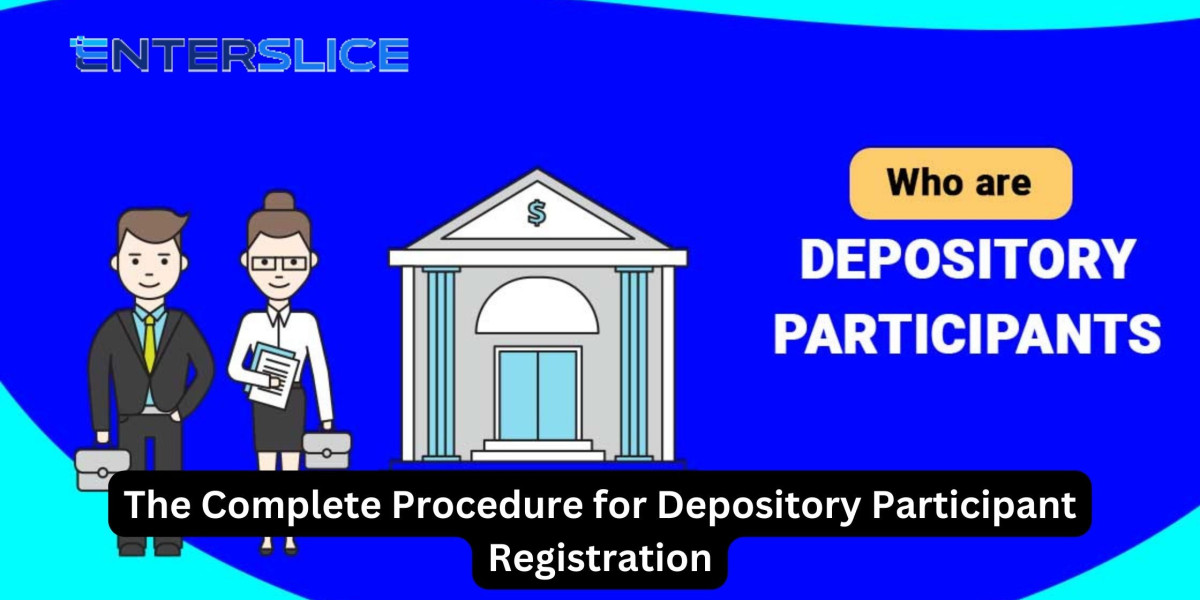Introduction
Becoming a Depository Participant (DP) is a crucial step for businesses and financial service providers who want to facilitate investors in opening and managing Demat accounts. These accounts are vital for holding securities electronically, and DPs play a significant role in streamlining the trading and settlement process for investors in the stock market.
In India, Depository Participant registration allows an entity to act as an intermediary between the investor and the depository (NSDL or CDSL). The registration process involves several steps, documentation, approvals, and infrastructure setup. In this blog, we’ll walk you through the complete procedure for registering as a Depository Participant.
What is a Depository Participant?
A Depository Participant is an agent of the depository (NSDL or CDSL) who provides depository services to the investors. A DP acts as a liaison between the depository and investors, facilitating services such as:
- Opening and maintaining Demat accounts
- Electronic transfer of securities
- Settlement of transactions
Being a Depository Participant is an essential function in the Indian securities market, as it ensures the smooth transfer of securities without the need for physical certificates.
Step-by-Step Procedure for Depository Participant Registration
If you are planning to become a Depository Participant, follow this comprehensive process to get started:
Step 1: Submit Your Application to NSDL
The first step in the Depository Participant registration process is to submit an application to the National Securities Depository Limited (NSDL). You must submit the application in the prescribed format, along with all the required documents and the necessary application fee.
Ensure that the documents are complete and accurate to avoid any delays in the process. The list of documents typically includes:
- Certificate of incorporation of the applicant company
- Audited financial statements for the past 3 years
- List of directors and key management personnel
- Proof of infrastructure (physical premises, computers, etc.)
- PAN card and other identification documents
Step 2: Approval by NSDL
After receiving your application and documents, NSDL will place your application before the concerned committee for review. The committee will assess the application to ensure that all the required criteria are met, such as financial soundness, infrastructure setup, and the company’s capability to handle depository operations.
Upon approval, you will be required to procure the necessary infrastructure and hardware as per the system specifications mentioned by NSDL. This includes setting up computers, networking systems, and other technology to operate the depository services.
Step 3: Staff Training and Certification
One of the essential requirements for becoming a Depository Participant is ensuring that your staff is well-equipped to manage the day-to-day operations. To ensure your team is well-prepared, you will need to depute your staff to attend a three-day training program at the NSDL office in Mumbai.
This training will familiarize your staff with the NSDL system, processes, and operations. Additionally, they must pass the NISM – Series VI - Depository Operations Certificate Examination or obtain the CPE (Continuing Professional Education) qualification. This certification is necessary to ensure that the staff is competent in handling the responsibilities of a Depository Participant.
Step 4: Installation of Infrastructure and System Testing
After the staff training and certification, the next step is to install the required infrastructure. This involves setting up the necessary systems, software, and hardware to support the depository operations.
Once the infrastructure is ready, NSDL will conduct a pre-activation inspection at your premises to ensure that everything is in place and meets the required specifications. The inspection will check that your systems are fully operational and capable of handling the depository functions efficiently.
Step 5: Application Sent to SEBI
Upon successful inspection and setup, your Depository Participant registration application will be forwarded to the Securities and Exchange Board of India (SEBI). SEBI is the regulatory body that oversees all financial markets and ensures compliance with rules and regulations.
After SEBI reviews and accepts your application, you will be granted conditional approval to operate as a Depository Participant. At this stage, your participantship will be activated in a pilot environment for testing purposes.
Step 6: Pay Necessary Fees
As part of the registration process, you are required to pay certain fees to both SEBI and NSDL. These fees cover the costs of the application review, system access, and regulatory compliance. The fee structure is available on the NSDL website at: NSDL Charges.
Step 7: Signing the Agreement with NSDL
Once the testing phase in the pilot environment is completed successfully, you will need to enter into a formal agreement with NSDL. This agreement will outline the terms of your participation and responsibilities as a Depository Participant.
Step 8: Activation and Operational Status
Finally, after completing all the necessary steps, including the payment of fees, and signing the agreement, your Depository Participant registration will be activated, and you will officially be operational in the NSDL system.
What Happens if You’re Already a CDSL DP?
If you are already a Depository Participant with CDSL (Central Depository Services Limited) and wish to switch to NSDL or add NSDL as an additional service, the application process will not involve SEBI’s review. Instead, NSDL will process the registration internally, making the transition smoother.
Key Considerations for Depository Participant Registration
Regulatory Compliance: You must adhere to the regulations set by both SEBI and NSDL for becoming a Depository Participant. Non-compliance can lead to penalties or rejection of the application.
Technology Setup: Since depository services are heavily reliant on technology, ensure that your infrastructure and systems are capable of supporting these operations effectively.
Staff Training and Certification: Well-trained staff are vital for smooth operations. Ensuring that your team completes the necessary training and certification will help maintain high standards of service.
Ongoing Monitoring: Once you’re operational, regular audits and checks will be conducted to ensure that you remain compliant with industry regulations and best practices.
FAQs
1. What are the key benefits of becoming a Depository Participant?
Becoming a Depository Participant allows you to provide valuable services like Demat account management, electronic securities transfer, and settlement services, giving you a competitive edge in the financial market.
2. How long does it take to complete the DP registration process?
The entire Depository Participant registration process can take several months. This includes document submission, infrastructure setup, staff training, and approval from NSDL and SEBI.
3. Can a Depository Participant provide services for both NSDL and CDSL?
Yes, a Depository Participant can be registered with both NSDL and CDSL, allowing them to offer services for both depositories. However, the registration processes for each depository are separate.
Conclusion
The process of becoming a Depository Participant in India requires meticulous planning, attention to detail, and compliance with regulatory standards. By following the steps outlined in this guide, you can smoothly navigate through the Depository Participant registration process and successfully operate as a DP. This will enable you to provide essential services to investors and contribute to the growth of the Indian securities market.
Also, read other topics:








